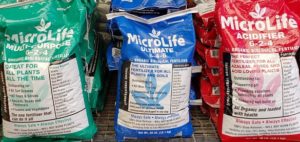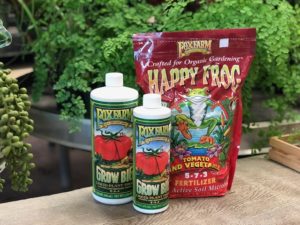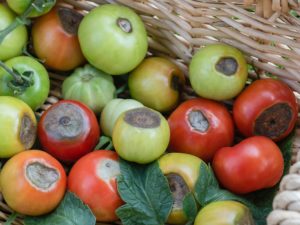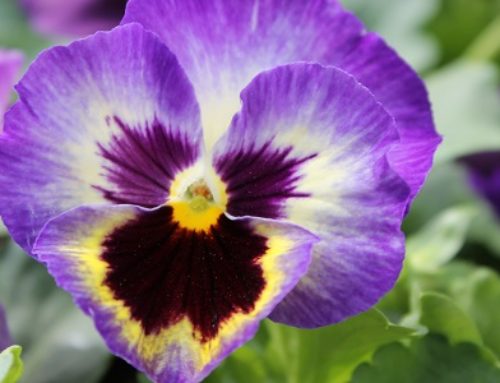ANNUALS AND PERENNIALS:
Continue planting warm season annuals and perennials. Work compost into the beds before planting and apply fertilizer such as MicroLife 6-2-4 or 8-4-6 after planting. Water the planting in well.

Add large colorful pots of combination plantings to your landscape. Be sure to include tall, medium and trailing plants- also known as “the thriller, the filler and the spiller”!!!
Check for insects such as Aphids, Caterpillars and Mealybugs regularly. Use Safer Insecticidal Soap, Spinosad Soap or Captain Jack’s Dead-bug Brew as organic options, or consult out staff for chemical options.
Containers should have drainage holes and should not have saucers under them. It is difficult to water correctly if the pot does not drain freely. Be sure to leave at least a 2” space between the top of the soil and the top of the pot-then you have a “reservoir” to fill with water each time you water. Fill the reservoir several times each time you water. If you see bubbles, continue watering, as this indicates air pockets in dry soil. See our YouTube video on watering potted plants HERE.
VEGETABLES:
April means warming soil, and the time to plant the “heat-loving” vegetables like Okra, Sweet Potatoes and Southern Peas. Continue planting squash and cucumber this month. Wait until the soil warms towards the end of the month to plant corn. Plant corn in several short rows instead of one long row, as corn is wind-pollinated, and will have a better crop with short rows.
Continue fertilizing pepper and tomato plants weekly with water soluble fertilizer Fox Farm Grow Big or Big Bloom, or Happy Frog Tomato and Vegetable slow release organic fertilizer.

Continue regulating moisture on all crops, especially tomatoes. The black bottoms which form on ripening tomatoes can be caused by fluctuating soil moisture. This is called Blossom End Rot, and it can also be caused by a Calcium deficiency. With mostly calcareous soils in Central Texas, only soil-less mixes or hydroponically-grown tomatoes would be susceptible to low calcium levels, and they may even receive sufficient calcium from irrigation water. If your soil is acidic you should add calcium per soil test instructions. Soil testing for nutrient levels is recommended every 2-3 years.

TREES AND SHRUBS:
Certain evergreen trees and shrubs will shed older leaves and needles when new growth appears in the spring. Magnolias, Photenia, Italian Cypress, Cherry Laurels, Pittosporum, Abelia and Yaupon Holly are some examples. This is a natural process and is nothing to be concerned about. Consult one of our knowledgeable staff members if there is any doubt.
Prune any “once-blooming” shrubs, vines, or roses (Lady Banksia Rose for example) soon after they finish blooming. The flower buds for next year will form in the coming months, and pruning during the summer months will remove these flower buds meant for next spring’s bloom.
Fertilize Azaleas and Camellias when their blooms fade away, using an acid-type fertilizer such as MicroLife Azalea or NutriStar Azalea.
All shrubs, trees and perennials may be fertilized this month. MicroLife 6-2-4 has beneficial microorganisms and mycorrhizal fungi which assist in the uptake of water and nutrients. Organic Nitrogen is water-insoluble, and requires microorganisms to break it down to a usable form. It is not necessary to water-in organic Nitrogen.
LAWNS:
Fertilize lawns after you have mowed it 2-3 times in the spring. Organic fertilizers are slow-release and do not contribute to disease problems the way the high-nitrogen commercial fertilizers do. Drought-stressed lawns should not be fertilized with a high –Nitrogen fertilizer, as their root systems would not be able to support the resulting growth spurt. We recommend MicroLife 6-2-4 or 8-4-6 organic fertilizer for lawns.

Regular mowing creates dense turf. Keep the mower blades sharpened, and mow often enough to avoid removing more than one third of the leaf blade.
Weeds should have been addressed in February, with both pre-emergent and post-emergent herbicides. Avoid using “weed and feed “products on your lawn. Besides being inappropriate timing for a combination fertilizer and post-emergent herbicide, the granular post-emergent herbicide will harm tree roots and further weaken our already drought-stressed trees. Remember, tree roots grow 1-1 ½ times the height of the tree out from the trunk! Your tree’s roots may even be in your neighbor’s yard, so be sure to talk to them about the evils of “weed and feed”!
FRUIT:
Now is the time to thin fruit on your fruit trees to promote good size and quality of fruit. Leave one fruit every 4 inches for plums, and one fruit every 6-8 inches for peaches. Pears and apples produce fruit in clusters, and should be thinned to one fruit per cluster. I know this sound crazy, but if you leave ALL the fruit the tree has produced on it to develop, the fruits will be small and of poor quality.
Fertilize fruit and nut trees now with MicroLife Citrus and Fruit organic fertilizer with beneficial mycorrhizal fungi. Repeat an application in 2 months.
Keeping your fruit trees irrigated while the fruit is producing is critical to producing a good crop of fruit. Established trees should receive about 1” of irrigation weekly, while newly planted trees should have their tree wells filled 2-3 times per week, depending on the temperature.
Happy Gardening, and as always, consult our knowledgeable staff for your gardening needs or questions!




